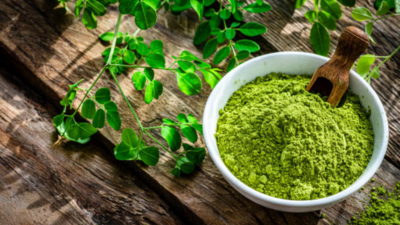ARTICLE AD BOX

If you’ve been hanging around the wellness aisle in any health store in the US chances are you’ve already spotted moringa powder sitting pretty in green packets. It’s marketed as a “superfood,” tossed into smoothies, energy balls, and even lattes.
But here’s the question a lot of people ask: Is moringa powder really as effective as eating fresh moringa leaves or the fruit (drumsticks)?Moringa, often called the “miracle tree,” comes from South Asia and parts of Africa. In India, it’s been used for centuries in curries, soups, and even traditional medicine. Almost every part of the tree, leaves, pods (aka drumsticks), seeds, and flowers, is edible and loaded with nutrients.In Western countries it’s the powder form that’s become super popular because it’s shelf-stable, easy to use, and can be added to just about anything.
Nutrient breakdown: Powder vs. fresh leaves vs fruits
Here’s where things get interesting.Moringa leaves (fresh): They’re packed with vitamins A, C, and E, calcium, iron, and a good amount of protein for a leafy green. Eating them fresh gives you the full nutrient profile without much processing.Moringa powder: This is made by drying and grinding the leaves.
The drying process can reduce some sensitive nutrients like vitamin C, but other nutrients (like iron and antioxidants) remain pretty strong and sometimes even become more concentrated.So, while you may lose a bit of vitamin C in the powder, you’re still getting a ton of goodness, especially if fresh moringa isn’t available in your local grocery store.The moringa fruit, commonly called drumsticks in Indian cooking, is another nutritional powerhouse.
It’s rich in vitamin C, fiber, and antioxidants. Many South Asian households add it to curries and stews not just for taste but for its health benefits, too.Compared to leaves and powder, the fruit is lower in certain nutrients like iron but higher in others like vitamin C and fiber. So, it really depends on what your body needs.
Why moringa powder wins in the US
Finding fresh moringa leaves or fruit is tough. Importing fresh produce is costly, and it doesn’t last long once it’s picked.That’s where moringa powder shines. It’s easy to store, lasts for months, and you can just scoop it into your morning smoothie, tea, or even soup. For busy lifestyles in North America or the UK, powder is often the most practical way to get moringa’s benefits.Based on research, especially the US NIH, moringa leaf powder is considered nearly as effective as using fresh moringa leaves, especially regarding nutrition, antioxidant capability, and various health benefits.
The powder retains most beneficial compounds found in the leaves such as proteins, vitamins, minerals, and antioxidants; this makes it convenient and potent for supplementation, particularly in regions where fresh leaves are less available.

(Image credit: https://pmc.ncbi.nlm.nih.gov/articles/PMC8373516/)When comparing moringa fruit to the leaf or its powder, evidence is much more limited. The majority of studies and reviews focus on leaves and leaf powder, citing their rich content of essential amino acids, minerals, and antioxidant compounds.
Government-linked literature does not emphasize moringa fruit for health benefits as strongly as the leaf or powder. Moringa leaf powder has even been shown to deliver significant advantages in supplementation, improving health markers and offering more effective outcomes compared to standard iron tablets in studies related to anemia.
How to use each form
Moringa powder: Add to smoothies, juices, energy balls, soups, or even sprinkle on salads.Moringa leaves (if you find them): Cook like spinach in stir-fries, curries, or soups.Moringa fruit (Drumsticks): Add to curries, boil in soups, or use in stews for a unique flavor and texture.



.png)
.png)
.png)
















 5 hours ago
3
5 hours ago
3









 English (US) ·
English (US) ·